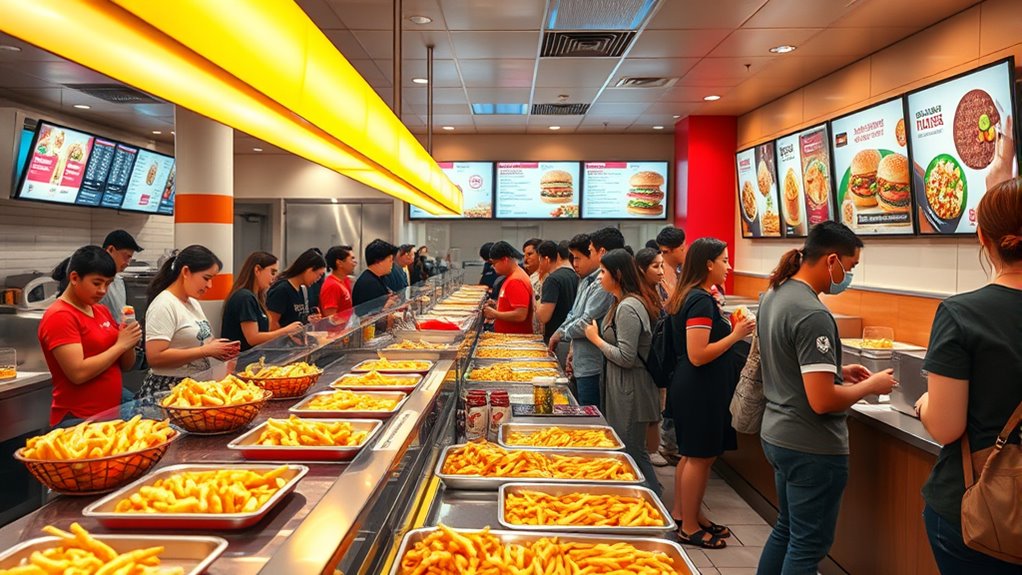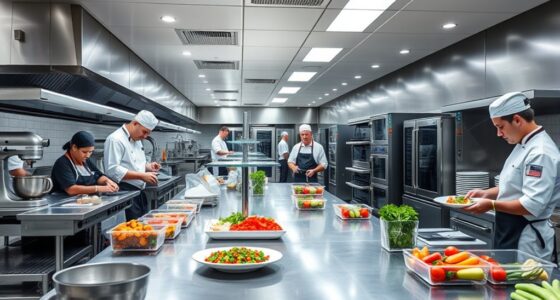A quick-service restaurant (QSR) is a place where you can get your food fast and conveniently. It focuses on simple menus, quick prep, and service mainly through counters or drive-thrus. Popular brands like McDonald’s and KFC serve millions daily by offering affordable, consistent meals. If you want to understand how QSRs stand out from other dining options and explore future trends, keep exploring this topic further.
Key Takeaways
- QSRs are fast-food restaurants prioritizing speed and convenience in service.
- They operate through counters or drive-thrus with limited, simple menus.
- Emphasis is on quick preparation, standardized processes, and affordable pricing.
- Service focuses on takeout and minimal customer interaction, unlike full-service dining.
- They incorporate digital tools like kiosks and mobile apps to enhance speed and efficiency.
Defining the Core Characteristics of a QSR
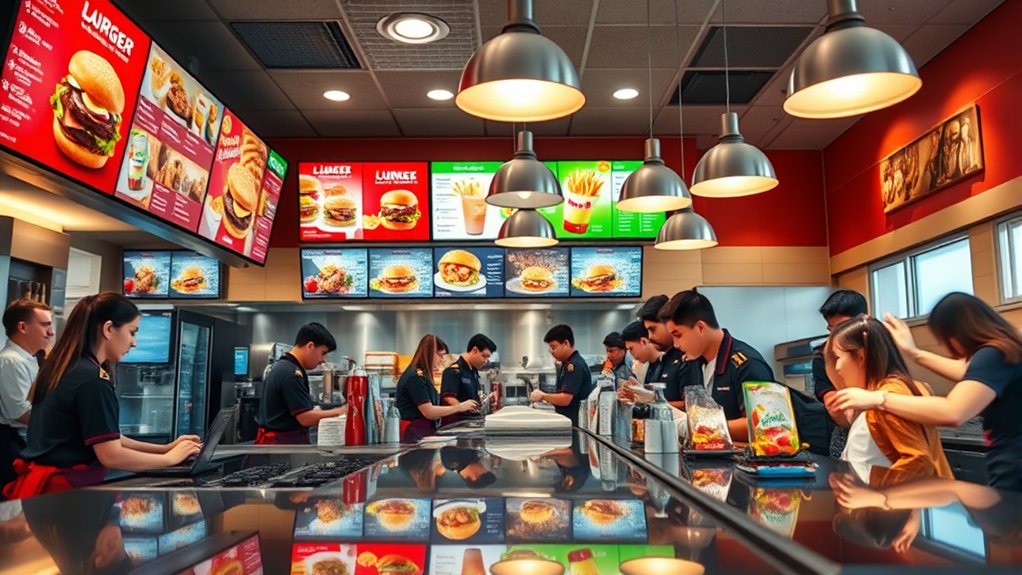
What exactly sets a quick-service restaurant (QSR) apart from other dining options? It’s primarily its focus on speed and convenience. You order at a counter or drive-thru rather than waiting for table service. The menu is usually simple, featuring items that can be prepared quickly, so you get your food fast. QSRs emphasize efficiency with streamlined operations, often using pre-prepared ingredients and standardized processes. They tend to be affordable, appealing to customers looking for a quick, satisfying meal. Additionally, QSRs prioritize consistent quality and quick turnaround times, making them ideal for busy schedules. This combination of speed, affordability, and convenience defines the core characteristics that distinguish a QSR from dine-in or casual dining options. The use of menu options that are designed for rapid preparation further sets QSRs apart in the fast-food industry.
Examples of Popular QSR Brands
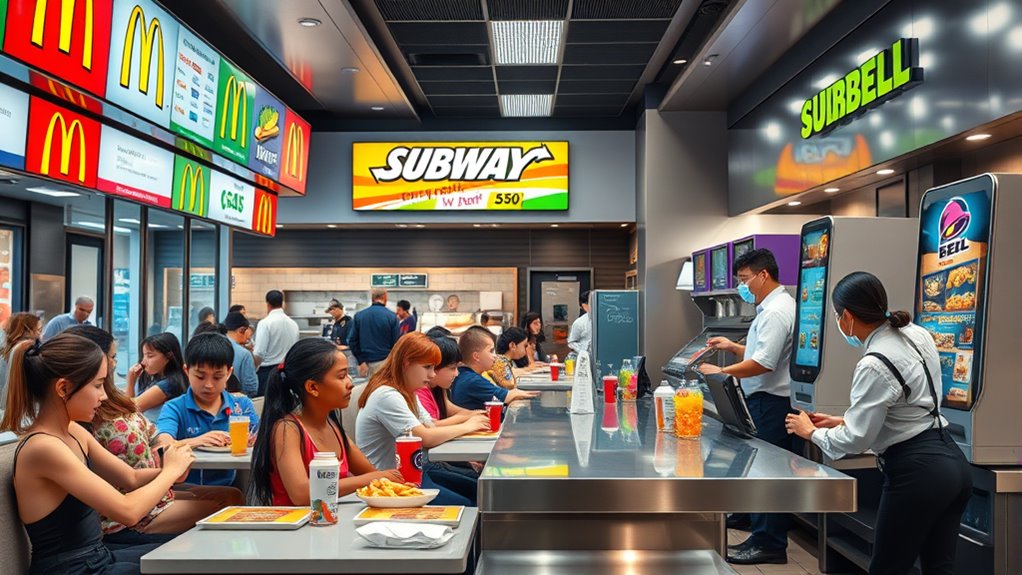
Have you ever wondered which brands dominate the quick-service restaurant industry? You’ve probably encountered several of these familiar names daily. Here are four popular QSR brands:
Many well-known brands lead the fast-food industry, serving millions daily with quick, familiar options.
- McDonald’s – Known worldwide for its burgers and fries, it’s a leader in fast-food convenience.
- Burger King – Famous for its flame-grilled burgers and signature sandwiches.
- KFC – Specializes in fried chicken and comfort food favorites.
- Subway – Offers customizable sandwiches and salads, appealing to health-conscious customers.
These brands have built strong reputations through consistency, quick service, and recognizable menus. Their widespread locations make them accessible and familiar, making them top choices when you need a quick, satisfying meal.
How QSRS Differ From Other Dining Options
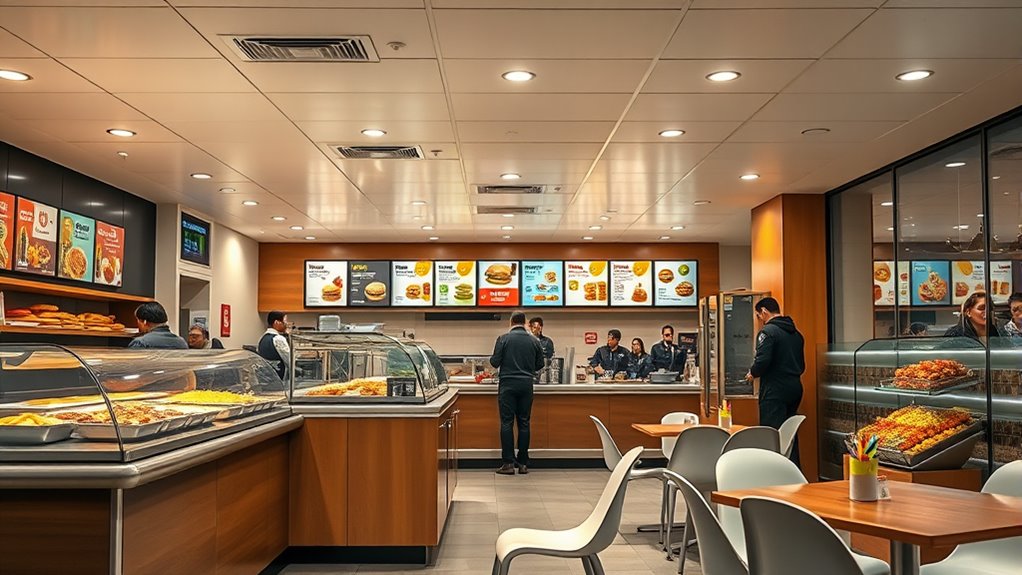
Quick-service restaurants (QSRs) stand out from other dining options by prioritizing speed, convenience, and affordability. Unlike full-service restaurants, where you wait for a server and dine at a leisurely pace, QSRs focus on quick turnaround and ease. They often have streamlined menus, minimal table service, and a focus on takeout or drive-thru options. Here’s a comparison:
| Feature | QSR | Casual Dining | Fine Dining |
|---|---|---|---|
| Service | Fast, minimal interaction | Table service | Full-service, personalized |
| Menu | Limited, focused | Broader choices | Extensive, gourmet |
| Price Range | Affordable | Moderate to high | High |
This setup emphasizes speed and simplicity, making QSRs ideal for quick, budget-friendly meals. Quick turnaround is a key characteristic that sets QSRs apart from other dining options.
The Role of Speed and Convenience in QSRs
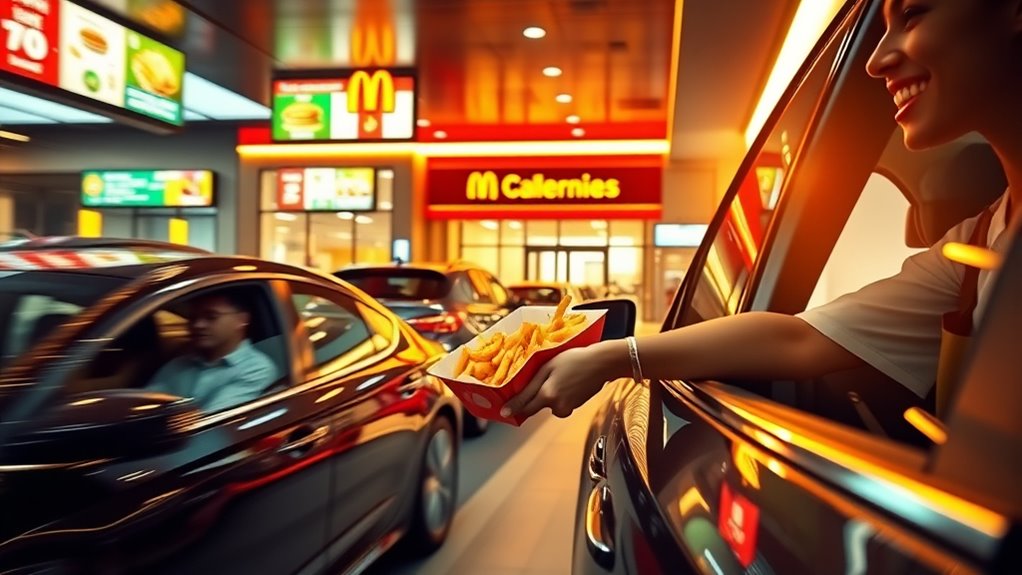
Why do so many people choose QSRs for their meals? Because speed and convenience are key. When you’re hungry and pressed for time, QSRs deliver quick service, letting you get your food fast. They optimize every step, from ordering to pickup, to save you time. Here’s how they do it:
- Streamlined menus focused on popular items
- Efficient ordering systems like drive-thrus and kiosks
- Pre-prepared ingredients for rapid assembly
- Multiple locations for easy access
- They often have Wi-Fi connectivity to enhance the customer experience and support digital ordering options.
These strategies mean you spend less time waiting and more time enjoying your meal. The focus on speed ensures you can satisfy your cravings during busy days or quick breaks, making QSRs a go-to choice for busy lifestyles.
Trends and Future Developments in the QSR Industry
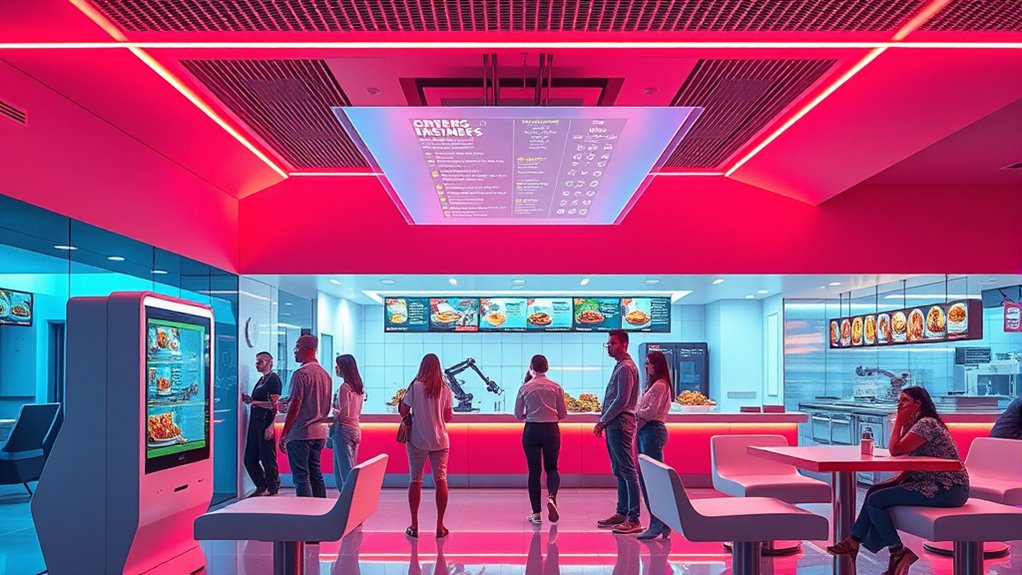
As technology continues to advance, the QSR industry is embracing innovative trends that reshape how you order and enjoy your meals. Digital ordering kiosks, mobile apps, and contactless payments make your experience faster and more convenient. AI and data analytics are helping restaurants personalize menus and optimize operations. Future developments include autonomous delivery, virtual kitchens, and sustainable packaging. These innovations aim to improve efficiency, reduce wait times, and enhance customer satisfaction. Keep an eye on these trends, as they’re shaping the industry’s future and transforming your quick-service experience. Additionally, digital menu solutions are continually evolving to create more engaging and interactive ordering environments.
Frequently Asked Questions
How Do QSRS Impact Local Economies?
You might wonder how quick-service restaurants affect your local economy. They create jobs for residents and often source ingredients locally, boosting nearby suppliers. QSRs attract customers, increasing foot traffic for other businesses nearby. They also generate tax revenue that funds community projects. Overall, they can stimulate economic growth in your area, providing employment and supporting local supply chains, making your community more vibrant and economically resilient.
What Are the Typical Staffing Requirements for a QSR?
You’ll need a team of staff members to run a QSR smoothly. Typically, this includes cooks, cashiers, and servers, with staffing levels varying by size and hours of operation. During peak times, you might need more employees to keep service fast and efficient. You’ll also require managers to oversee daily operations, ensure quality, and handle customer concerns. Proper staffing guarantees your QSR stays efficient and delivers good customer experiences.
How Do QSRS Maintain Food Safety Standards?
Maintaining food safety standards is a challenge like no other, but you rise to it every day. You follow strict protocols, such as proper handwashing, correct storage, and temperature controls. Regular cleaning and sanitizing of equipment are essential, and you monitor food quality constantly. Training staff on safety procedures guarantees everyone stays vigilant. By adhering to these practices, you protect your customers and keep your operation running smoothly and safely.
What Marketing Strategies Are Most Effective for QSRS?
You should focus on digital marketing, like social media campaigns and mobile apps, to attract more customers. Offering special promotions, loyalty programs, and clear branding also boost visibility. Engaging content, timely responses, and local partnerships build trust and encourage repeat visits. Remember, consistency across channels makes your brand memorable. By combining these strategies, you’ll effectively reach your target audience and grow your QSR’s customer base.
How Do QSRS Adapt to Changing Consumer Preferences?
Like a chameleon in a vibrant jungle, you adapt quickly to shifting consumer tastes. You monitor trends, embrace new flavors, and incorporate healthier options, all while maintaining your core identity. You leverage technology for convenience, enhance customer experience, and stay flexible in your menus. By listening actively and innovating, you keep pace with changing preferences, ensuring your relevance and continued success in a competitive landscape.
Conclusion
Think of a QSR as a trusty compass guiding your busy day—always there to steer you quickly toward satisfying your hunger. While it may seem simple on the surface, it’s really a trusted friend that adapts and evolves, embracing new trends and technologies. Just like a compass that points true, a good QSR keeps pace with your needs, reminding you that sometimes, life’s most essential moments are best served fast, convenient, and reliable.
